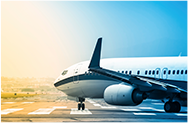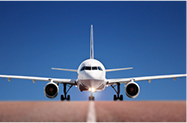
Where is travel loyalty headed? The results of a new survey by travel website Skift may provide some clues.
Earlier this month, Skift posed the following question to self-identified frequent travelers: “What’s your favorite method of collecting loyalty points?”
That was the only question, and there were only two options: traditional airline or hotel programs, with single-program currencies (American AAdvantage, Hilton HHonors, et al); or travel-rewards cards with currencies that can be used to book awards or converted into points or miles in other programs (American Express, Capital One, Chase, et al).
Although traditional programs edged out the travel-rewards cards, 58.5 percent to 41.5 percent, the rewards cards’ strong showing should be seen as a shot across the bow of the airline programs that have for decades dominated the travel-loyalty scene. You know, those airline programs that keep devaluing miles and restricting award availability.
Digging deeper into the respondents’ demographics, the precarious position of traditional schemes, now and in the future, is even clearer.
Looking at the travelers’ ages, in the 18- to 24-year-old category, traditional programs bested rewards cards by just 55.1 percent to 44.9 percent, suggesting that the new generation of frequent travelers is significantly more engaged with non-traditional programs. (Among those between 55 and 64 years old, traditional programs were preferred by an overwhelming 64.1 percent to 35.9 percent.)
Non-traditional programs also rated highly among those with household incomes between $100,000 and 149,999, the highest bracket for which a statistically significant number of responses was received. This highly desirable group split almost equally between the two types of programs.
Other findings:
- Women are more likely to prefer traditional programs than men are.
- Traditional programs are disproportionately more popular among urban respondents, with rural and suburban travelers more evenly split.
- Regionally, traditional programs are most popular in the South.
Reader Reality Check
What’s your favored type of travel-loyalty program?
Has it changed over the years?
This article originally appeared on FrequentFlier.com.
We hand-pick everything we recommend and select items through testing and reviews. Some products are sent to us free of charge with no incentive to offer a favorable review. We offer our unbiased opinions and do not accept compensation to review products. All items are in stock and prices are accurate at the time of publication. If you buy something through our links, we may earn a commission.
Related
Top Fares From
Today's Top Travel Deals
Brought to you by ShermansTravel
Ireland: 9-Night Dublin, Kilkenny, Killarney, Galway...
Brendan Vacations
 vacation
$3875+
vacation
$3875+
Amsterdam to Copenhagen: Luxe, 18-Night Northern...
Regent Seven Seas Cruises



Ohio: Daily Car Rentals from Cincinnati
85OFF.com





